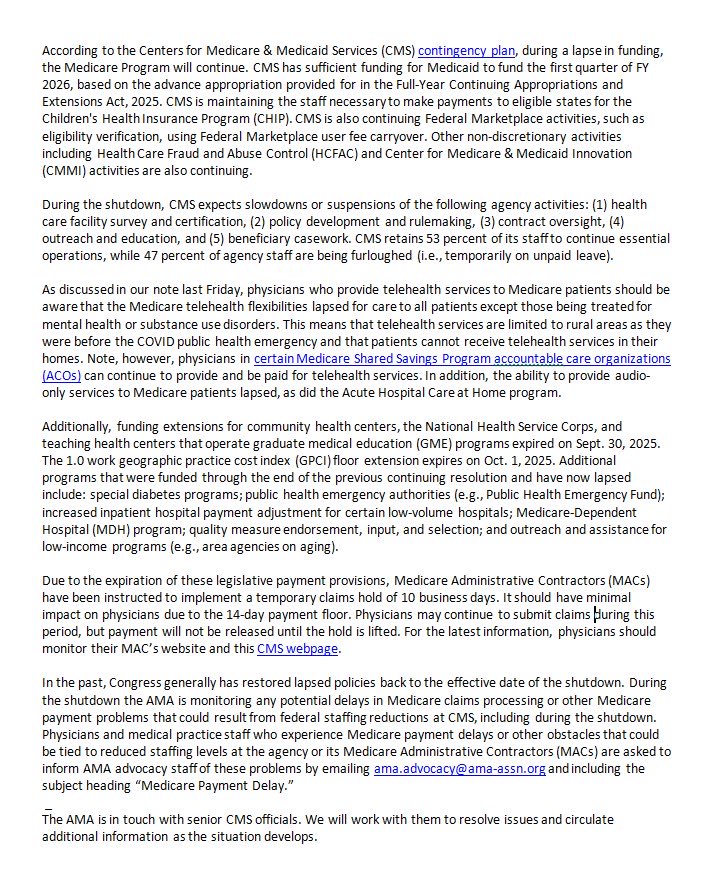🧵#OurAMA finds widespread lack of competition in local markets across US where #PBMs provide services to commercial health insurers.
First analysis to examine variations in market shares/competition among PBMs at state/metropolitan levels.
Read: tinyurl.com/bdf8m258
First analysis to examine variations in market shares/competition among PBMs at state/metropolitan levels.
Read: tinyurl.com/bdf8m258

2/ AMA’s competition analysis presents national and local market insight on 5 different #PBM services performed for insurers:
•rebate negotiation
•retail network management
•claim adjudication
•formulary management
•benefit design
Read report here: ama-assn.org/system/files/p…
•rebate negotiation
•retail network management
•claim adjudication
•formulary management
•benefit design
Read report here: ama-assn.org/system/files/p…

3/ @AmerMedicalAssn President @JackResneckMD said:
“The AMA already has serious concerns about #PBM business practices that can have a detrimental impact on patients’ access to and cost of prescription drugs.”
“PBM markets require careful scrutiny…” See👇
“The AMA already has serious concerns about #PBM business practices that can have a detrimental impact on patients’ access to and cost of prescription drugs.”
“PBM markets require careful scrutiny…” See👇

5/ The analysis found that commercial insurers largely use a #PBM for three services:
•rebate negotiation
•retail network management
•claims adjudication
Rather than conducting them in house.
The analysis thus assessed market competition for those 3 PBM services.
•rebate negotiation
•retail network management
•claims adjudication
Rather than conducting them in house.
The analysis thus assessed market competition for those 3 PBM services.
6/ At the national level, the analysis found that a handful of #PBMs have a large collective market share for the three PBM services most used by insurers:👇 

7/ At both the state and metropolitan levels, the analysis found a high degree of market concentration for each the three PBM services assessed by the study:👇 

8/ The analysis also quantified the extent of vertical integration between health insurers and PBMs.
An insurer is vertically integrated with a PBM when a PBM service is performed in house or supplied by a PBM that shares ownership with the insurer.
Findings:👇
An insurer is vertically integrated with a PBM when a PBM service is performed in house or supplied by a PBM that shares ownership with the insurer.
Findings:👇

9/ According to the analysis, “even though the largest health insurers and PBMs are vertically integrated, there is still a significant portion of the market that remains not vertically integrated, particularly at the local level."
10/Vertically integrated insurers may not allow non-vertically integrated insurer competitors to access their PBMs or they could raise the cost of those PBM services.
❗️This could adversely affect non-vertically integrated insurers & ultimately patients through higher premiums.
❗️This could adversely affect non-vertically integrated insurers & ultimately patients through higher premiums.
11/ The analysis of competition in commercial #PBM service markets adds to the @AmerMedicalAssn’s work to shine a light on market consolidation in the health insurance industry.
12/ Protecting patients and physicians from anticompetitive harm will continue to be a vital issue of public policy for the @AmerMedicalAssn, the federation of medicine, and the nation’s physicians.
13/ The @AmerMedicalAssn website offers additional information on #OurAMA’s efforts against anti-competitive mergers.
Read more here: ama-assn.org/delivering-car…
Read more here: ama-assn.org/delivering-car…
• • •
Missing some Tweet in this thread? You can try to
force a refresh












